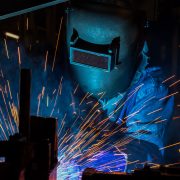Steel – the go-to solution for your construction project?
Steel offers a wide range of benefits to the construction industry because it is safe and sustainable, lightweight yet strong, cost effective and high quality. As such, using steel has become the preferred method of construction the majority of the construction projects our society depends upon. The past thirty years has seen steel become the most popular framing option for a diverse range of building projects, from large, multi-storey buildings, through to warehouses, agricultural buildings, schools, shopping centres and museums.
Although the construction industry’s preference for steel is still a relatively new phenomenon, there’s one factor which hasn’t altered in all building projects: cost. Just like the wider world, the construction industry is focussed upon the goal of quality and value for money and this is where steel is proving invaluable. Whilst the small upfront development costs and sustainability benefits of using steel might initially seem quite minor, they are now seen as adding up to provide long-term cost advantages.
Furthermore, steel is increasingly being seen the construction framing solution of choice for the UK construction industry, with more than 90% of single storey buildings now framed with steel, and over 70% of multi-storey projects. As a result, steel construction in the UK is the most technically advanced and successful in the industrialised countries of the world.
Safety is, of course, of paramount importance to the construction industry and using steel is now recognised is inherently safer than other forms of construction. There are two main reasons for this: the first is the all steel components are manufactured off-site in carefully controlled conditions to enable exacting tolerances, and steel frames are construction on-site by teams of highly skilled and experienced erection specialists.
Last and by no means least, steel construction offers more flexibility in comparison to concrete, for example. As a result, steel-framed buildings are easily extended or altered with a minimum of fuss and disruption, whilst avoiding the need for potentially environmentally harmful redevelopment.






